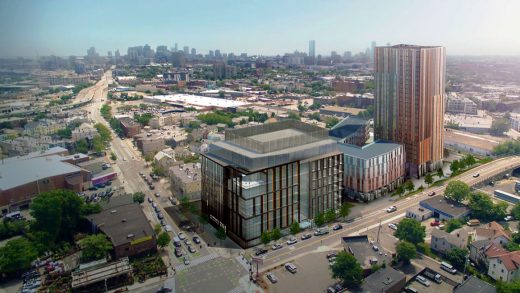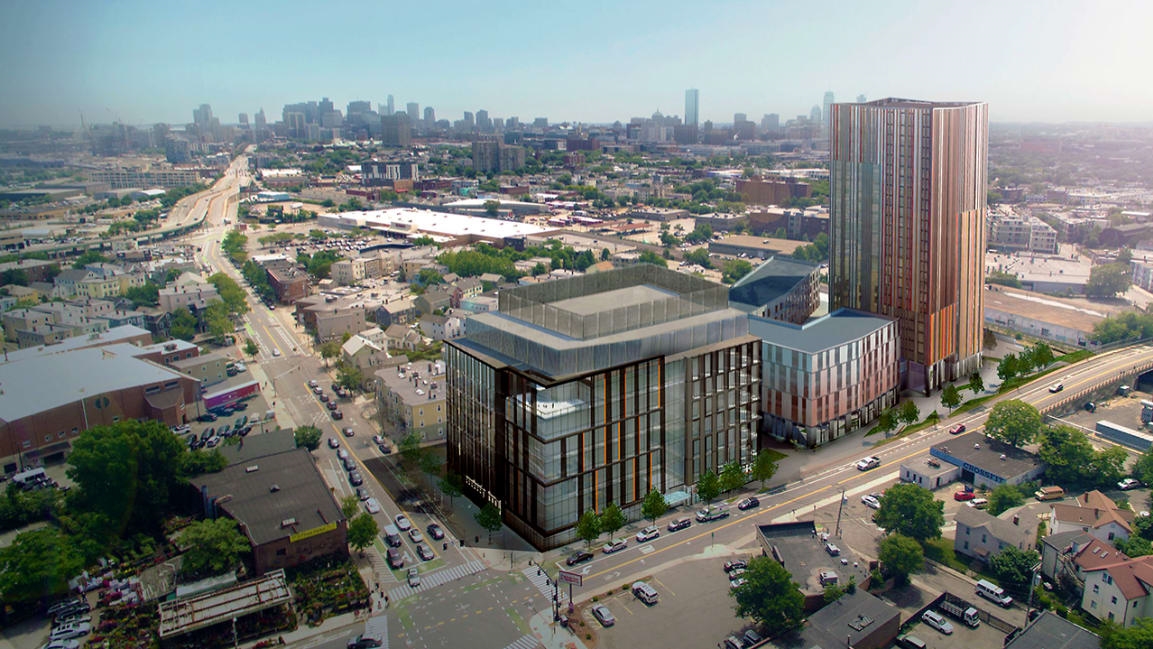This city is angling to build the East Coast’s next innovation hub
Kendall Square in Cambridge, Massachusetts, represents a near-perfect marriage of technology, science, and capitalism. Butting right up against MIT and down the street from Harvard, the square boasts gleaming high-rises built by Pfizer, Biogen, and Akamai, offices with outposts for Google, Facebook, and Twitter, and thriving incubators and accelerators including Cogo Labs and MIT’s the Engine. In 2009, the Boston Consulting Group called it “the most innovative square mile on earth.”
Officials from around the country and across the globe have approached Cambridge City Hall trying to learn how to create an innovation district as prosperous as Kendall. The truth is, Kendall’s success comes out of a unique set of circumstances: It’s walking distance from MIT, Harvard, and a subway line that connects to a half-dozen other major research universities; it was full of old factories just waiting to be rehabbed or demolished; and the area is flush with venture capital cash (Massachusetts ranked third in the country for number of venture capital deals inked in the first quarter of 2018).
But with Kendall riding an astounding tech boom, not every startup can—or wants to—find a home there. For some, culture and costs make the area a nonstarter. “When I think about Kendall, to me, that’s big biotech in sparkling, brand-spanking-new buildings, and that doesn’t fit us,” says Shreya Dave, CEO of Via Separations, which is trying to solve global energy problems by radically changing manufacturing processes.
With a BA and PhD from MIT, Dave seems quintessential Kendall. But Via Separations doesn’t have much in common with Pfizer or Google. “We fit into cleantech, not biotech. Also, when you look at the rents biotech pays, $75 a square foot and up, we can’t sign a three-year lease at that price.”
A solution is coming into shape just down the road. Union Square, only a mile and a half away in the city of Somerville, is a hodgepodge of triple-decker homes and apartment buildings stuffed with grad students, immigrants, and families who have lived here for a century. Capitalism has found a home in Somerville, too, but it looks different. Rents still hover at around $35 a square foot, less than half the cost of Kendall, in a neighborhood where bars, tiny groceries, and restaurants with cuisines from a dozen countries mingle with new arrivals such as climbing gyms, cafes with cold brew, and bakeries with sea-salt bourbon caramel donuts.
Once called Slummerville by detractors, the city has spent two decades rehabbing its reputation. Led by Mayor Joe Curtatone for 15 years, city hall has aggressively, and successfully, courted tech companies to drive its reinvention. No gleaming, glass high-rises loom over the small businesses yet. But with a number of former industrial sites ideal for rehab and a new subway stop coming in 2021, an astounding 1.2 million-square-feet of science and tech office and lab space is set to open in the center of Union Square in the next half decade.
A new train station alone can lead to a burst of new housing and large commercial developments, and anticipation for the Green Line T stop has already increased the cost of property, says real estate agent David Lilley. But an influx of tech could dramatically increase the rate of change.
Greentown Labs represents Union’s first big step toward becoming the next Kendall. The incubator moved into part of a former envelope factory in Union in 2013. “We demand a unique space, we need space where you can actually make stuff and make noise and get dirty and drop things that are heavy,” says Emily Reichert, another MIT alum and the CEO of Greentown. Last winter, it became the largest hardware-focused cleantech incubator in the country when it expanded its campus by renovating a 60,000-square-foot, 100-year-old former foundry next door, spreading its 80 member companies—including Dave’s Via Separations—between two buildings.
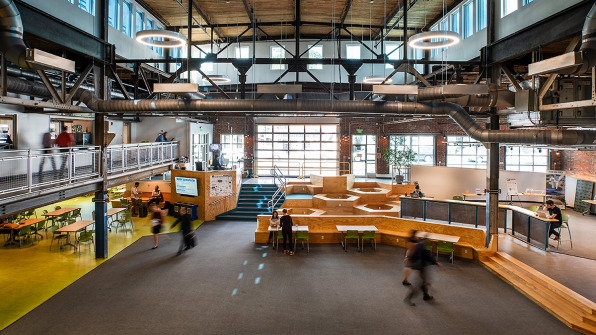
[Photo: Barry Hetherington]
“This area of Somerville was a very traditional industrial area and has buildings that have lasted for a century,” she says. “These structures are not made to be turned into fancy office space. They are what we need, not what a Google or Amazon would need.”
Because of its sheer size, much of Union’s tech burst can be directly attributed to Greentown. Just seven years old, Greentown has gone from having one employee (Reichert) to providing space for more than 450, with an in-house machine shop, electronics shop, wet lab, and more. So far, it’s pulled in $350 million in funding. One of the startups it nurtured, RightHand Robotics, with its roots at MIT and Harvard, spun out of the incubator to take over the 24,000-square-foot site of Union Square’s former post office.
Others are also fueling the boom. A block away from Greentown, nonprofit community fabrication collective Artisan’s Asylum has helped entrepreneurs by letting them use tools and tech to experiment—the collective gives members access to 3D printers, laser cutters, engineering software, and more. In addition, 3D-printing company Formlabs, which has over 500 employees in four countries, has thrived in Somerville. All this is only the beginning.
Under current development plans, there will be room here for about a dozen more Greentowns in the next five years. The city picked a Chicago-based developer, Union Square Station Associates (US2), to redevelop much of area around the square: 15 acres including a thousand housing units, 20% of which have been earmarked as affordable. Already, US2 has made powerful connections to help fund the $1.5 billion project, with financial services company USAA signed on as an equity partner.
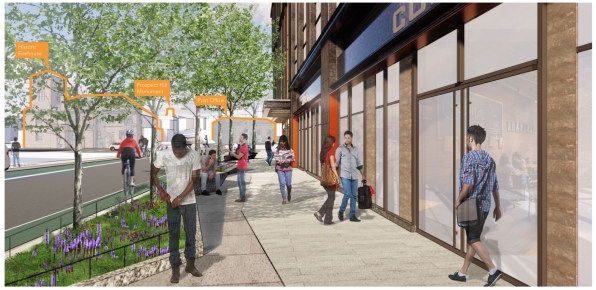
The first phase, a four-acre parcel located on the corner of Prospect Street and Somerville Avenue, expected to break ground this fall, will include a seven-story building with commercial lab and office space and a 25-story mixed-use residential building. When complete, the whole project will be comprised of 60% commercial and 40% residential development, with 2.5 acres of open space.
Likely coming online before that, the Boynton Yards development project will place 374,000 square feet of commercial and lab space a 10-minute walk from Union’s center, toward Cambridge and Kendall. “The Boynton Yards area is full of warehouses and car junkyards, so there is a lot of opportunity for transformation,” says Somerville economic development director Tom Galligani. “Some sites will be rehabbed. Some will come from the ground up and break ground in the next couple months.”
If you build it, they may leave
While Union Square has been championed as a hot and hip destination by the New York Times, it remains a modest neighborhood. It is a place where quirky Fluff Festivals (they invented the sweet marshmallow stuff in Union) and genius tech startups can coexist among the red-brick, two- and three-story buildings. By comparison, everything from the behemoth biotech buildings to industrial-chic restaurants in Kendall look like they were built (October 26, 2018). “Kendall is the most impressive cluster of life science buildings in the world, and we aren’t going to replace that,” says Galligani. “But as a spillover area, we feel we are really well-positioned.”
Not everyone feels well positioned to reap the benefits of the boom. The planned office and lab space will be paired with a glut of new housing, most of that in the form of condos far out of reach of people with typical Somerville incomes: Well over 80% of the city’s households already can’t afford to buy a condo or single-family home. Somerville alderman J.T. Scott says the city needs the revenue that new businesses will bring, but worries developers working in the center of Union haven’t prioritized the existing community.
“It’s vital to encourage commercial development in Somerville, but we can’t simply prioritize luxury condos and displace residents who have been here a long time through [eminent domain] development or price them out of the market,” Scott says. “I want to see the companies spun out of Greentown and Artisan Asylum succeed, and I am an advocate for growth in the city, but enabling radical redefinitions of our neighborhoods without having tenant protection in place simply provides a financial windfall for the developer that are the fastest movers with the deepest pockets.”
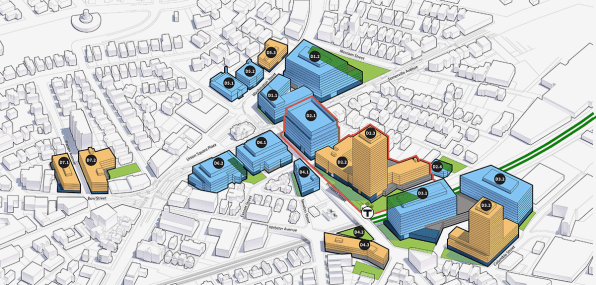
[Image: US2]
The revenue Scott wants should be there, with estimates of nearly $12 million annually in new property taxes. But Scott, other aldermen, and the community group Union Square Neighborhood Council want US2 to do more to mitigate the impact on current residents, including providing more affordable housing.
“We would like to minimize the displacement that comes from a luxury development and a transformational development,” says Bill Cavellini, co-chair of the Council. “A billion plus and 15 acres is the kind of thing that even in Boston would be considered transformational. In a city like Somerville, with a fraction of the population, is definitely transformational.”
While the Council and US2 are still negotiating a community benefits agreement, including provisions for union jobs and affordable housing, the aldermen did vote in December 2017 to increase the amount developers must pay the city to create such housing, from $5.15 to $10 per square foot on developments over 30,000 square feet. Those revenues would also establish payments to be used for local job training.
Others have a feeling of déjà vu. Lilley has been been selling real estate in the area since the ’80s. After a few decades of watching Somerville city officials court tech, Lilley isn’t timid about playing up Union’s potential.
“I saw it happen once with Kendall Square, and I’ll see it again in Union Square,” he says. “The development will work exactly the same. Once you get 10 stories up in Union Square, you’ll be able to look right across the two cities and see the high rises in Kendall right there. Fifteen years from now, you’ll look at Union and it will be exactly like Kendall is today.”
Jed Gottlieb writes about tech, business, and rock ‘n’ roll for Fast Company and others. Follow him @jedgottlieb.
(16)

